Missiology is concerned with the historical process of church growth, renewal, leadership succession and development among others, hence it needs to pay attention to the historical origin, ‘expansion and factors that contributed to the origin of the Independent Churches.’[1] Elder Apostle (Professor) Israel Olusegun Otemuyiwa, a Professor of Chemistry, Obafemi Awolowo Univeristy, Ile-Ife, has become one of the most vocal proponents of revival within the Sacred Cherubim and Seraphim Movement (C&S) in Ijesaland and Nigeria in general. Apostle Otemuyiwa takes after his late father, Elder Apostle/Prophet Moses Ige Otemuyiwa who during his prophetic multifaceted ministry turned Osu to the Jerusalem of Nigeria with visits and appreciations from notable national leaders like Chief Obafemi Awolowo, Gen Adeyinka Adebayo, of the then western region, Chief A Adegbenro, Chief Onibonoje, Chief Adebayo Adefarati, Owa Agunlejika, Lawyer Olajide Obadare among others. Pastor Gbenga Otemuyiwa, Baba Otemuyiwa’s surviving eldest son explained that “BABA Adura’s birth record was not available at any time but estimated as per events and history which placed his to be around 1918. His father’s name was Jacob Ifakinlede OLALUWOYE omo OTEMUYWA, the first Arapate of Ikobi, Osu, while his mother was Felicia Obihunmike Ajayi Ponjolosun, (aka Iya Alaro) of Alaaye’s compound, Ilesa. It is on record that at birth, Ifa priest (Oloidi) predicted that Baba would be great and would be enrobed white cloth all the days of his life.’[2] Baba Otemuyiwa’s ministry started in 1936 when his father, Olaluwoye suffered affliction which Ifa could not heal until he was brought to C&S church. God healed him and his son, Baba Ige Otemuiyiwa was baptised with the Holy Spirit. Pa Olaluwoye Otemuyiwa surrendered all his charms for burning and was converted to Christ in C&S church. Baba Ige Otemuyiwa was later Christened Moses under the mentorships of late Elder Israel Jayeoba and Most Snr Apostle Ojo Saseyi.[3]
A Methodist Catechist picked Baba Ige Otemuyiwa but his grand father, a staunch Ogun and Ifa worshipper threatened the Catechist ‘with “Ase” (curse) if he introduced anything to this ‘boy.’’ Pastor Gbenga Otemuyiwa explained that ‘BABA however grew to become a very good farmer planting yams and other food crops, cotton wool and later cocoa which he later specialized and made huge returns from for over five decades of his latter life time. Baba’s escapades in cocoa farming brought him to be friends to big associates and players in cocoa industry such as BABA Lawrence O OMOLE and Baba Peter AGUNLEJIKA who later became Owa Adimula of Ijesaland – 1966-1980. His associates as cocoa farmers often said of him that “BABA has faith in God and cocoa because he believes that God answers his prayers and cocoa fetch him money for sustenance. Another pastime for Baba was his hunting which he inherited from his father as a family business. He demonstrated swift use of the cutlass and Dane gun.”[4] God commissioned Baba Otemuyiwa to stay in Osu and through his prophetic ministry God used him to eradicate small pox, guinea worm and other notable disease. God used Baba Otemuyiwa to destroyed all principalities and territorial demons operating in Osu including Ogudu shrine and the iroko tree that forbid eating and selling of pounded yam in Osu. Baba Otemuyiwa ‘instituted consumption and selling of pounded yam in Osu in 1949.’ Baba Otemuyiwa’s ministry brought development to Osu including the electrification project, the choice of Osu as the headquarters Atakumosa Local Government.[5] Baba Otemuyiwa was the chairman of the Council of Prophets and Ministers from 1962 to 1976 and witnessed spiritual revival in C&S church to the extent that C&S church became synonymous with Ijesaland. Under Baba Otemuyiwa’s leadership, C&S, Oke Ayo Osu in 1990 hosted the general conference with the dedication and official opening of Osu C&S Cathedral and ‘the church was given the parish status by late Baba Alakoso Omole and later district headquarters status by Baba Alakoso Alao. After over 70 years in the service of the Lord, Baba Otemuyiwa ascended into glory on February 6th, 2006.
Among the reasons for this publication is primarily to appreciate the leadership and missiological importance of African Independent Churches (AIC) with their ‘focus on the incarnation in the Christian message within a particular culture, as manifested in for instance intelligible preaching and adapted Bible translation; religious environment.’ It is also to appreciate the fresh expression of AIC as exemplified through the Baba Adura Moses Ige Otemuyiwa and the election of one of his children Apostle Otemuyiwa the new Baba Adura and Minister in charge of the first Sacred Cherubim and Seraphim Church, Osu, in Ijesaland to hold Sunday worship. The truth is that, Apostle Otemuyiwa in the foot step of his father reflects ‘legitimate indigenization or contextualization, in which Christian communication is adapted and rendered intelligible without forfeiting crucial scriptural truths’ enhances the gospel among the common people. Apostle Otemuyiwa’s common gospel is for the common people especially at the grassroots. The consecration of Apostle Otemuyiwa in an “Aladura church” provides a vivid picture of the value, mistakes and limitations of Western Christianity in the past and that of the new generation churches in the present. Among the features of the Independent Churches including ‘the sometimes fragmentary scriptural interpretation, emotional expression, holistic approach, pragmatic or materialistic accents’ points to mission strategy in Africa in the future. The term Aladura (prayerful) churches is used in Nigeria, while in the Ivory Coast they are known as Harris churches because of the evangelisation accomplished by the prophet, Harris. Others speak of Spiritual churches and “prophet-healing churches” based on the revelation of God’s Spirit through prophets and a message of salvation in which faith healing occupies a key position.
Anderson, Allan in one of his works ‘A “Failure in Love”? Western Missions and the Emergence of Africa Initiated Churches in the Twentieth Century,’ and in reference to David Barrett’s theory, points to the emergence and development of African Initiated Churches (AIC) to a “failure of love” on the part of Western European missions. Miller, Walter’s account in his book, ‘Have we failed in Nigeria,’ aptly corroborated the effect of Anderson’s and Barrett’s theory of the ravages of the slave traffic in Nigeria, with its consequent miseries and degradation of human life that provides the summary in the life of, and mission in Nigeria today as a reproduction of competition on the European missional pattern.[6] The J. D. Y Peel’s unfair description of the Order of AIC in his book ‘Aladura, A Religious Movement among Yoruba,[7] as “unremarkable Christian but eclectic,’ was aptly corrected by Alex Amaramiiro in his book ‘Doctrinal Ideas of the Eternal Sacred Order of the Cherubim and Seraphim.[8] Amaramiiro agreed with Professor Akinyele Omoyajowo on the fact that the foundational doctrine of the doctrine of Eternal Sacred Order of Cherubim and Seraphim in Nigeria as reproduced in the 1930 article of association was Bible based. According to Omoyajowo in his book ‘Diversity in Unity: The Development and Expansion of the Cherubim and Seraphim in Nigeria,’ explained that the four broad divisions of the church started in Lagos where the church was founded in 1925 and where it later split into many groups across Nigeria.[9] The proliferated nature of the C&S as the first indigenous church in Nigeria being the pioneer of an AIC in Nigeria points to its tendency that has led to the rapid growth but with loose structure of the group which made discipline challenging. Consequently, fake prophets abound everywhere. Omoyajowo pays particular attention to the church’s efforts to foster its indigenousness, to its consequent spectacular evangelistic successes, and to the emphasis it places on pneumatology and the charismata of the Spirit.[10]
Patriarch Professor Bolaji Idowu, the first patriarch, Methodist Church Nigeria whose works continue to influence many of the practitioners and writers of Nigerian and African church history, in one of his book “Towards an Indigenous Church,” argues that Nigeria Christianity goes beyond an engine of divided colonial policy. His vision was that, it is overdue for church in Nigeria to look at herself; examine her soul. Idowu’s idea of indigenization in term of the church serving as the spiritual home of Nigerian Christians in which they can breathe an atmosphere of spiritual freedom provides inspiration for the development of AIC and other independent churches in Nigeria.[11] Among the factors that causes the rise of AIC include the ‘missionary attitude and missionary theology, one way or another, justifies schism,’ the multiplication of Protestant mission in one area, a lack (in some churches) of ritual and an opportunity to concretize the sacral, the need for small local congregations, where a feeling of security and fellowship can develop, a tribal structure which stresses decentralization, limited promotion of indigenous ministers, a colour bar in the community reflected in the church and lack of opportunity for Black leadership in the political, civic and industrial spheres.
In the words of Peel, ‘the Ijesa clearly fall within the Yoruba ethnographic category and share the legends of Ife dynastic origins.’[12] Among the sixteen children of Olofin Moomo Oduduwa, oral and written sources agreed that Ajibogun, Orun-Agan-ni Yeye, the progenitor of Ijesa race and the fetcher of brine which made him earn the epithet Owa Obokun meaning: “O wa, o bu okun,” that is, “You came and you fetched the brine.”[13] The brine was used to cure Oduduwa’s partial blindness. Using the words of Patriarch Idowu, the key note of Ijesas despite their doggedness and frankness is their religion just as the real, key note of the life of the Yoruba is neither in their noble ancestry nor in the past deeds of their heroes. The key note of their life is their religion.[14] Professor Olayiwola explained that Ijesa believes in Olorun or Olodumare (God) and worshipped Him through the divinities (orisa) as intermediaries. In Osu, the deity of Ogudu was worshipped.
The sowing of the Gospel seed in Ijesaland dates back to the visit of the Ibadan based CMS missionary, David Hinderer who visited Ilesa in 1858. The Yoruba intertribal war hindered the spread of the Gospel until the Ijesa Association, a nucleus of Ekiti Parapo Confederacy seeking for reparation ‘saw Christianity as a symbol of peace and civilisation and appealed to missionaries to ‘come unto Macedonia and help.’ At this point, ‘Ijesa sons and daughters including those liberated from Sierra-Leone, played a significant role in the propagation, and consolidation and expansion of Christianity in Ijesaland.’ Olayiwola explained that Sapara Williams and P. J. Meffre, the Ijesa Saros and other members of Ijesa Association worked together to have Rev M J Luke as the resident Anglican minister to Ilesa. The then Owa and chiefs allocated a parcel of land at Iloro for the missionary and their early converts to build the first Anglican Church in Ijesaland, known as Saint John’s Anglican Church in 1895. Methodism in Ijesaland followed the same missional patterns with the Anglican Church. According to Olayiwola, Owa Ajimoko 1 of Ijesaland who was earlier baptised in Lagos as a Sierra- Leone emigrant before he ascended the throne invited to Ilesa the missionaries from Sierra-Leone in 1896 and the first church was built at Otapete. The second Anglican Church in Ijesaland was founded at Omofe called the Holy Trinity Church with the dedication of the building on September 29, 1896.[15]
The emergence of the Anglican and the Methodist churches in Ijesaland was followed by denominational multiplicity between the period 1859-1926. Samuel Johnson Omirin in 1917 brought African Church to Ilesa and was ‘received with open hands by polygyny who had been refused Holy Communion and baptism in the Anglican and Methodist churches. Owa Ayatero provided some land for the building of African Church and school in Ilesa in 1921. It is important to note that Nigeria was in the atmosphere of revival that swept through the nation at the close of the First World War, 1918, and continued until the late 1930s.
The background to the emergence of apostolic movement in Nigeria was the terrible outbreak of influenza, ‘the Great Pandemic,’ in 1918 in Ijebu Ode. Peel explained that in order to curb the spread of the influenza, churches and schools were closed down by the government. While everybody retired to the farm, including the pastor of the community premier church, members of the church continued to hold prayer meetings in the house of Joseph B Sadare, the People’s Warden, and member of the Diocesan Synod.[16] At the same time in a village called Isoyin, five mile to Ijebu Ode, Peel explained that a young schoolmistress, Sophie Odunlami saw a vision that God would send a rain which would cure people of the sickness, which happened. This missional act brought Sadare and Odunlami together to form a society for healing through Christ alone. Their beliefs and practices was not affiliated to any external organization, and their membership was constituted by the active member of St Saviour, the community premier church. After the epidemic was overcome through the power of prayer, and the healing of the victims, the group was formally inaugurated in July 1920, as Egbe Okuta Iyebiye (i.e Precious Stone, or Diamond Stone). The society parted way with the Anglican authorities based on the doctrinal disagreement like infant baptism, exclusive use of faith healing, and reliance on dream and visions for guidance.
The Precious Stone group made contact with an American sect called Faith Tabernacle, Philadelphia, but operating as the Diamond Society of Faith Tabernacle in Lagos under David Ogunleye Odubanjo. The doctrine of Faith Tabernacle based on the principles of prevailing prayer, power of dream, and spontaneous rejection of medicine for prayer fitted the Precious Stone Society at St Saviour, Ijebu Ode. In 1921 Joseph Sadare and Odunlami join Odubanjo for the formation of Faith Tabernacle in Nigeria.[17] After some time of fellowship and growth, the American group led by Pastor Clark and some Nigerian members disagreed on some doctrinal and administrative processes, and by 1928 all ties were broken.[18] Odubanjo’s quest on Pentecostalism was against the unemotional Faith Tabernacle religion.[19] Jemigbon explained that the relationship was not too long especially for the failure of the authority of the Faith Tabernacle congregation to come to the aid of Nigerian fellowship when it was facing persecution and difficulties with the British authorities in Nigeria.[20] Olayiwola added that the association between the Philadelphia group and the Faith Tabernacle of Nigeria was terminated following the marital problems of Pastor Clark, the leader of the American group.[21] The contact of the Nigerian group with another missionary group, Faith and Truth Temple, of Toronto, Canada headed by Pastor Myers ended as a failure in 1929.[22]
Babalola 1930 Oke Oye and other Revivals.
While Nigerian Faith Tabernacle group was going through different broken partnership, Peel explained that a young man from up-country, by name Babalola had joined the group.[23] Babalola, an Anglican born on April 25, 1904 had unusual and strange experience on the night of 25th September, 1928. This experience climax when the engine of his steam roller stopped without visible mechanical fault. Babalola resigned from his work with the Public Works Department to go on mission. Babalola experience and gifting as a prophet with healing power through omi iye (water of life), and extra-ordinary power climaxed with the 1930 Oke-Oye Revival.[24] Internally two Nigerian groups – Ilesa and Oyan, were involved in controversy on some doctrines, and the national leaders scheduled a meeting for the 9th-10th July, 1930, at Ilesa to discuss the issue and other related matters.[25] Babalola was also invited to the meeting based on his testimonies to meet with the leader, after the meeting. Olayiwola explained that while the Ilesa meeting with 24 items agenda was going on, ‘suddenly a mighty sweeping revival broke out at Faith Tabernacle Congregation Church at Oke –Oye, Ilesa. The revival began with the raising by Babalola of a dead child.’[26] Many other miracles happened with the use of the prayer-bell and drinking of consecrated stream of water called ‘Omi Ayo, Stream of Joy.’[27] This event was followed by thousand of people including Christians form other denominations within and outside Ilesa. The reconciliatory meeting which turned to open field event became the foundational ecumenical gatherings that The Apostolic Church and Christ Apostolic Church are known for till date. Other Babalola revival itineraries were Oke-Bola, Ibadan in September 1930, Efon-Alaaye in October 1930, Ake Abeokuta in November 1930, and Ikare Akoko in 1931.
It is important to note the important role of Pa S G Elton who left Liverpool, United Kingdom on 17th February 1937 and arrived Lagos, Nigeria in March 11, 1937. Later moved to Ilesa when more hands were needed to fan the flame of the on-going revival, Pa Elton was convinced that God brought him to Nigeria for a purpose beyond a denomination, hence the origin of Nigerian Pentecostalism. Pa Elton worked and mentored Apostle Babalola until 1939 when due to internal crisis with the British missionaries, Apostle Babalola left The Apostolic Church along with Pastors Odubanjo and Akinyele for form CAC. After the transition of Apostle Babalola in 1959, Pa Elton continued ‘to raise a new breed of leadership in the Nigerian church … In the 60s provided platforms in Nigeria for American evangelists … By the 70s he has become the father of Pentecostal Revival Movement in Nigeria.’[28] Until his transition in 1987, his ministry influenced leaders like Very Rev Dr Mike Oye, Archbishop Benson Idahosa, Pastor Enoch Adeboye, Bro Gbile Akanni, Barrister Femi Osundahunsi, Bishop Francis Wale Oke, Pastor W F Kumuyi, Bishop David Oyedepo among others.
The streams of Aladura Movement of 1918-1930 from the Precious Stone or Diamond Society, the Cherubim and Seraphim Society founded in Lagos in 1925 by Saint Moses Orimolade and the Church of the Lord, Aladura founded by Josiah Oluwalowo Oshitelu at Ogere in 1930 provides a helpful understanding of C& S in Ijesaland. The loose structure makes the C&S church easy for different groups to separate from the main body, and it is thus notable for the numerous groups which sprang from it but remain related to it. The loose structure informed what Omoyajowo called diversity in unity because people ‘refused to be mere spectators of history…but became actors in history.’[29] There are many stream of C&S among the principal ones are Eternal Sacred Order of the Cherubim and Seraphim, Cherubim and Seraphim Society, Praying Band, Cherubim and Seraphim Movement, and Holy Order of Cherubim and Seraphim.
C&S like any other independent church is built around strong leader.[30] Omoyajowo comprehensive accounts on the founding of C&S is centred on “Saint” Moses Orimolade, though some member of the Society held the view that the Society was not founded by man but by patriarchal body. This is supported with the naming of the Society after heavenly hosts- Cherubim and Seraphim. The account of two pioneer members, H.A Phillips and S.O Blaize of the Society cited by Omoyajowo in his argument established the fact that though Orimolade never claimed to be the founder, but the events before and after the emergence of the Society, described Orimolade better as founder.[31]
“Saint” Orimolade Tunolase was born around 1879 into the Royal Family of Omo’ba Ode Sodi of Okorun Quarters, Ikare in the former Western region of Nigeria.[32] At the time of his there was no authentic record of his birth. He was born into a family of herbalist, and the oracle predicted that he will be a powerful servant of God, because he was sent to preach the gospel of Jesus Christ. Different mysterious before and after his birth reinforced the prediction about him.[33] Omoyajowo cited the event at Orimolade’s birth where he ‘stood up in its birth blood’ desiring ‘to walk out three times.’[34] This act resulted to his disability. Orimolade spent his youth in Ikare, and in the only church in the town, St Stephen’s Anglican Church. Omoyajowo explained that in response to Orimolade’s prayer for his healing, and manifestation of God’s power, ‘an angel appeared to him and gave him three objects: a rod, a royal insignia and a crown.’[35] Orimolade encounter with angelic visitation and the three gifts which represents victory, authority for prayer and honour from every individual marks the successful beginning of his ministry to all part of Nigeria.[36]
Orimolade’s missionary journey which started at Ikare around 1916 to Irun, Ogbomoso, Benin took him to Lagos. In every town he visited, he directed his converts to existing churches irrespective of their denomination. He helped to establish local CMS in Igbira town.[37] When Orimolade got to Lagos on July 12th, 1924, he was a guest preacher to a number of people. Notable among them was Venerable Archdeacon T.A.J. Ogunbiyi of the Holy Trinity Church, Ebute Ero. Orimolade’s gifting led to serious disagreement with Ogunbiyi, and the consequence of the disagreement led to the nickname Baba Aladura (the Praying Father) given to Orimolade in Lagos.[38] Orimolade’s outstanding ability in his proficiency in quoting passages from the Bible and miraculous feats during his many open-air meetings in Lagos climaxed with the birth of Cherubim and Seraphim Movement in September 1925.[39]
Omoyajowo explained that the Society was founded in 1925 by Orimolade, and the occasion for the founding of the Society was when Christianah Abiodun Akinsowon,[40] a teenage girl who fell into a protracted trance from18th to 25th June 1925.[41] Orimolade was invited by Akinsowon’s guardians, Mr and Mrs Hunu Moiyette to pray for her. According to Omoyajowo’s account, Akinsowon woke from her trance while Orimolade was praying, ‘and told strange stories of her mysterious experience in the “Celestial City” where she claimed she was during the period in trance.’[42] Orimolade under the siege of people who have come to see the revived lady, seized the opportunity to preach the gospel, and the follow-up formed the establishment of the Prayer Band that developed into a Society. At the beginning the group was called Aladura Band; from 9th September, 1925, it was called ‘Seraphim’ and on the 26th March 1926, ‘Cherubim’ was added.[43] Since that time the band has been called Cherubim and Seraphim (C&S).
The first schism in the C&S occurred in 1929 after protracted disagreement between Akinsowon and Orimolade. Orimolade’s personal letter to Akinsowon affirmed the issue of leadership as the basic problem. Akinsowon became the leader of her own group named Cherubim and Seraphim Society.[44] Other factions broke away after Akinsowon to form different streams of the Society, and Moses Orimolade Tunolase passed away on October 19, 1933, living a divided Society.[45]
Before C&S got to Osu in 1934, the founding leaders of C&S church Osu were Methodist members in Osu for over 30 years. There was a misunderstanding between Pa Ojo Saseyi and the Methodist leadership hence he and others like Pa Israel Famurewa and Pa Israel Jayeoba left Methodist Church to start a house fellowship. Pa Israel Famurewa, an ‘Osomaalo,’ an indigenous entrepreneurial based in Ibadan later brought the Good News about the healing power of the ‘white garment church,’ that is, C & S Movement at Oke Seni, Ibadan to his friend Pa Jaiyeoba at Osu. They thereafter intensified their fellowship at Pa Jaiyeoba’s house and ‘Pa Saseyi later went to Ibadan to get the order of Sunday worship from C & S, Oke Seni, Ibadan.’ Among the founding members of the C & S at Osu were: Pa Jaiyeoba (1st Leader); Pa Saseyi (1st church secretary and 2nd leader); Pa Aayeloja (1st chairman); Prophet Ikotun, Prophet Joseph Aaye, Prophet Arisangolo and prophetess Ato were among the early prophets of the church; Pa Ojo Samuel Osunkile; Pa Awe Ajilore; Pa Awe (1st Afiturari); Pa. Ogidan; Pa Ajidahun; Prophet Obatayo; Pa Isaac (1st Choir patron); Pa Oriowo; Pa Olaosebikan; Pa Shittu Ajilore (2nd Afiturari); Pa Okunola; Pa Olaoluwa; Pa Joseph Olajumoke (2nd Church Secretary); Pa Ajewole (3rd Church Secretary); Pa Ajidahun; Pa. Daniel Olaosebikan, among other.’ Pa Jaiyeoba was a great benefactor of the church who was sewing white garments for most members of the church to encourage them to be coming to church and especially new converts. This made many people joined and stayed there to worship and the church florish very well in Osu at that time.
The church land at Ikobi, Osu, where the old and the new church buildings were constructed was obtained from Pa Adesoji and Timothy Oriowo who were given Bibles and bottles of Schnapps to show appreciation. Pa Oriowo later became a member of the church. The current church building is the 4th building to be used for worship. The first was on the same site as the old one which was demolished to build the second and third church while the new one was built on a new site. The church spilt into two after the death of Pa Jaiyeoba in 1946 and a new leader was to emerge. Barrister Folorunso Ogunjuyigbe explained that, after the church meeting decision, it was later announced that the Spirit (Emi) has chosen Pa Saseyi to become the new leader and not Pa Olaleye or Pa Ogunlana.[46] The opposing camp lead by Pa Awe (aka lawyer), Pa Ogunlana, Prophet Arisangolo and others left in 1951 to form C & S Oke-Igbala at Oke-Omi, Osu. The first Minister-in-charge of C&S Oke Ayo, Osu was late Elder Apostle Moses Ige Otemuyiwa, the second minister was late Supt. Apostle A. O. Ajakaye and the new minister, Apostle Otemuyiwa is the third Minister-in-charge,.
The C & S, Oke Ayo, Osu was the 1st Sacred C & S Church in Ijeshaland to start Sunday service. The Sacred C & S church Oke-Esho, Ilesha under Papa Makinde later obtained order of Sunday service from Osu church. Olayiwola explained that the C & S Movement became a rival spiritual movement to C.A.C, especially to Oke- Oye revival. C&S, with the zeal ‘to offer solutions to human existential problems … in 1934 Captain Abiodun Emmanuel led a team of twelve members from Lagos to Ilesa.’ Captain Abiodun came to ‘Ilesa as the whole land was afflicted with drought and smallpox epidemic. She prayed for rain in the palace of Owa Aromolaran 1 with assurance that the rain would wash away the drought and plague from the land. Indeed there was a mighty downpour before Abiodun and her team departed to Lagos. Thus, the C&S broke the monopoly of Charismata which the CAC had been enjoying. C&S experienced rapid spread growth across Ijesaland between 1930-1950 and because of its loose structure, ‘in Ilesa municipality, the main stream of the C&S split into three major schismatic group namely’:[47] National Conference of the Sacred Cherubim and Seraphim Church of Nigeria and Overseas, Oke Eso Headquarters under the pioneer leadership of the Most Elder Apostle A.M Makinde and later succeeded by Most Elder Apostle S. A Fajuke. There is an independent Sacred Cherubim and Seraphim Society of Nigeria and Overseas, Idasa Headquarters, headed by Elder Apostle and Prophet J.A.O Omole. It was Pa Ige Otemuyiwa from Osu that reconciled Prophet Omole to joined Oke Eso Headquarters. The third stream, the Sacred Cherubim and Seraphim Church Eleto of Nigeria and Overseas under Bishop David O Awosan at Ijofi Headquarters. There is still a unified annual procession ‘Ajodun Gbogbogbo,’ from Ijofi to Oke-Esho that embraces the C&S family in Ijesalnd.
MOSES TO ISRAEL
The legacy of Elder Apostle Moses Ige Otemuyiwa as a C&S leader with eventful landmarks lives on with the election of his son, Apostle Profesoor Israel Olusegun Otemuyiwa. Born born on 18th March 1963 to the family of Otemuyiwa- Adenipekun Family of Ikobi Quarters, Osu, his Baba Adua Ige Otemuyiwa and his mother was Lady Leader Alice Ige Adejola Otemuyiwa, both of blessed memory were very strict but loving. I remember, Apostle Otemuyiwa’s mother, (Iya Onidodo) with reverence always prophetically called his son, Apostle Otemuyiwa, ‘Baba’ meaning ‘father.’
Apostle Otemuyiwa attended Ife Oluwa Primary School, Osu between 1969 and 1974 for his primary education. He had his secondary education at Ilesa Grammar School, Ilesa between 1974 and 1979 and proceeded to Oyo State (now Osun State) College of Education, Ilesa between 1980 and1983 and later to University of Nigeria, Nsukka for Bachelor of Science degree in Chemistry Education between 1986 and 1989. He also attended Obafemi Awolowo University, Ile-Ife for both Master of Science (M.Sc.) and Doctor of Philosophy (Ph.D.) in Applied Chemistry with specialization in Food and Nutrition Chemistry all between 1997 and 2012.
Apostle Otemuyiwa served as Youth Corper (National Youth Service Corps) at Metropolitan Secondary School, Onitsha between 1983 and 1984. He also worked with Osun State Teaching Service Commission as teacher. He taught in many secondary schools among which are: Ilase Community High School, Ilase-Ijesa, Anglican commercial secondary Grammar School, Iyekere, Ile-Ife, Moremi High School, Ile-Ife and C.A.C Grammar School, Edunabon.
He joined the service of the University as Assistant Lecturer in 2003 at the Department of Pure and Industrial Chemistry, Adekunle Ajasin University, Akungba Akoko. He was absorbed into the Service of Obafemi Awolowo University, Ile-Ife, as Lecturer II in the Department of Chemistry in 2009. He is a seasoned lecturer and researcher. Many of his research works were published in refereed Journals. He is currently on Professorial Cadre at the University.
Apostle Otemuyiwa is a member of The Great Reformers Club, Osu, and the Pioneer Chairman of the club and with Ayodeji Okegbile as the General Secretary. Apostle Otemuyiwa is adviser to many youth clubs and organizations. In 1992, with Apostle Otemuyiwa’s late brother, Tayo and others, we facilitated Osu Youth and community spiritual renewal under the umbrella, Youth Wing, Christian Association of Nigeria (CAN).
Rev Dr Biodun Ogunbeku, the Pioneer President, Great Reformers Club, and current President, Osu Development Council aptly described Apostle Otemuyiwa as a very transparent Christian leader with passion for soul, he can pay any price for soul winning and evangelism.[48] His zeal for evangelism and soul winning took him to join the Redeem Christian Church of God in 1990 when the church was established at Ilase Ijesa. The pioneer Pastor (a Togolese) who neither speak nor understand Yoruba Language was posted to the church. He decided to serve as interpreter to the man of God. Apostle Otemuyiwa became member of the church and was actively involved in evangelism, church planting, Bible teaching and prayer warrior. Apostle Otemuyiwa is a graduate of school of Disciple of The Redeemed Christian Church of God and Prayer School of Gethsemane School of Ministry.
However, while in the service of God in the Redeemed Church, he never neglected his service to God in the C& S fold. At the Holy Ghost Service in May 1999, the word of knowledge came through the General Overseer of RCCG, Pastor E.A. Adeboye that “if there is any available space or place to start Holy Ghost Service, go and start and God will work with you.” According to Apostle Otemuyiwa, “I received the message as mine and came to C&S Oke-Ayo to start Holy Ghost Night vigil, the programme comes up every 3rd Friday of every month till date, the Holy Ghost Night metamorphosed in 2005 to Holy Ghost Summit, the programme which comes up 3rd Friday of June every year lead to establishment Holy Ghost Camp in order to accommodate teeming population that attended the annual. God has been faithful to his words.”
In 2002, Apostle Otemuyiwa came fully for God’s assignment at C&S church Oke Ayo, Osu. With his wife, Dr Abosede Otemuyiwa and their children, Professor Otemuyiwa concentrates on youth and children evangelism without setting up any pressure group against the leadership of the church, I think it was because of this that God Christened Apostle Otemuyiwa’s ministry ‘Joyful Generation’
Apostle Otemuyiwawas ordained an Apostle in 1990 during the dedication of the C&S church auditorium, Osu, and National Conference. He was Ordained Deacon in 1999 by RCCG. He was Ordained Special Apostle in 2004, Senior Superintendent Apostle in September 2020 and Elder Apostle in December 2020, C&S, Oke Ayo, Osu. He is assigned the role as Reformer (Alatunse) of Good Women (3 in 1), Sacred C&S in Ijesa-land. He is the Patron Deborah Band, C&S Movement, Aladanla, Ile-Ife.Co-ordination Joyful Generation, C&S Oke-ayo
Today,
February 7th, 2021, to the Glory of God, Apostle Otemuyiwa is
ordained and installed as the Minister in charge, Oke -Ayo Model Parish and
Chairman, Oke – Ayo District Church Council of the Sacred Cherubim and Seraphim
Church, Osu, Atakumosa West Local Government, Nigeria.
[1] Daneed, Marthinus L, Quest for Belonging: Introduction to a Study of African Independent Churches (Mambo Press, 1981, pp. 25, 35-38, 43, 88.
[2] Interview with Pastor Gbenga Otemuyiwa, Baba Ige Otemuyiwa’s surviving eldest son.
[3] Celebration of Fulfilled Ministry Life Elder Apostle/Prophet Moses Ige Otemuyiwa, 2006, p. 24
[4] Interview with Pastor Gbenga Otemuyiwa, Baba Ige Otemuyiwa’s surviving eldest son.
[5] Celebration of Fulfilled Ministry Life Elder Apostle/Prophet Moses Ige Otemuyiwa, 2006, p. 25
[6] Miller, Walter R., Have we failed in Nigeria? (London: United Society for Christian Literature, Lutterworth Press, 1947), pp. 3-7
[7] Peel, J.D.Y, Aladura: A Religious Movement among Yoruba (London: Oxford University Press, 1968).
[8] Amaramiiro, Alex, Doctrinal Ideas of the Eternal Sacred Order of the Cherubim and Seraphim (Owerri: Ihem Davis Press, 1989).
[9] Omoyajowo J. Akinyele, Diversity in Unity: The Development and Expansion of the Cherubium and Seraphim Church in Nigeria (London: University Press of America, 1984)
[10] Omoyajowo J. Akinyele, Cherubim and Seraphim: The History of an Independent Church (Lagos: Nok Publisher International, 1982).
[11] . Idowu, E. Bolaji, Towards an Indigenous Church (London: Oxford University Press, 1965).
[12] Peal, John, D. Y, The Ijeshas and Nigerians: The Incorporation of a Yoruba Kingdom, 1890s-1970s (London: Cambridge University Press, 1983), p. 15
[13] Olayiwola, David, ‘Religious Pluralism and Functionalism Among The Ijesa-Yoruba of Nigeria’ in AJT, Vol 6, Issue 1, pp. 141-153
[14] Idowu, E Bolaji, Olodumare: God in Yoruba Beliefs (London: Longman, 1962), p. 5
[15] Olayiwola, David, ‘Religious Pluralism and Functionalism Among The Ijesa-Yoruba of Nigeria’ in AJT, Vol 6, Issue 1, pp 141-153
[16] Peel, J.D.Y, Aladura: A religious movement among the Yoruba, pp. 61-62
[17] Jemigbon, S.S, Apostolic movement in Nigeria, p. 9
[18] Peel, J.D.Y, Aladura: A religious movement among the Yoruba, pp. 69
[19] Peel, J.D.Y, Aladura: A religious movement among the Yoruba, pp. 65
[20] Jemigbon, S.S, Apostolic movement in Nigeria, p. 9
[21] Olayiwola, David. O, ‘Joseph Ayo Babalola (1904-1959),’ in Omoyajowo (ed), Makers of the Church in Nigeria 1842-1947, p. 145
[22] Vaughan, I.J, Nigeria: The origins of Apostolic Church Pentecostalism: 1931-52 (London: The Ipswich Book, 1991), p. 12
[23] Peel, J.D.Y, Aladura: A religious movement among the Yoruba, pp. 69
[24] Olayiwola, David. O, ‘Joseph Ayo Babalola (1904-1959),’ in Omoyajowo (ed), Makers of the Church in Nigeria 1842-1947, pp. 139-142
[25] Idowu, Moses Oludele, Joseph Ayo Babalola: The mantle of an apostle, pp. 26-27
[26] Olayiwola, David. O, ‘Joseph Ayo Babalola (1904-1959),’ in Omoyajowo (ed), Makers of the Church in Nigeria 1842-1947, p. 142
[27] Olayiwola, David. O, ‘Joseph Ayo Babalola (1904-1959),’ in Omoyajowo (ed), Makers of the Church in Nigeria 1842-1947, p. 142
[28] Boluwatife Oyediran, https://medium.com/crosswatch-review/s-g-elton-the-untold-story-of-a-renegades-mandate-for-the-early-christian-church-of-nigeria-6618342081f9
[29] Omoyajowo, Akin, Diversity in unity: The development and expansion of the Cherubim and Seraphim in Nigeria (London: Univesity Press of America, 1984), p. vi
[30] Sundkler, Bengt, ‘What is at stake,’ in Hayward (ed) Africa independent church movement, p. 31
[31] Omoyajowo, Akinyele.J, Cherubim and Seraphim: The history of an African Independent Church (Lagos: Nok Publishers International Ltd, 1982), p.3
[32] http://c-s-church-noahs-ark.org/about/sub2/, accessed on 4 July 2008
[33] http://c-s-church-noahs-ark.org/about/sub2/, accessed on 4 July 2008
[34] Omoyajowo, Akin, ‘Moses Orimolade Tunolase (1879-1933),’ in Omoyajowo J.A (ed), Makers of the Church in Nigeria 1842-1947, pp. 118-119
[35] Omoyajowo, Akin, ‘Moses Orimolade Tunolase (1879-1933),’ in Omoyajowo J.A (ed), Makers of the Church in Nigeria 1842-1947, pp. 120
[36] http://c-s-church-noahs-ark.org/about/sub2/, accessed on 4 July 2008
[37] Omoyajowo, Akin, ‘Moses Orimolade Tunolase (1879-1933),’ in Omoyajowo J.A (ed), Makers of the Church in Nigeria 1842-1947, pp. 124
[38] http://c-s-church-noahs-ark.org/about/sub2/, accessed on 4 July 2008
[39] Omoyajowo, Akin, ‘Moses Orimolade Tunolase (1879-1933),’ in Omoyajowo J.A (ed), Makers of the Church in Nigeria 1842-1947, pp. 128
[40] Omoyajowo, Akin, Diversity in unity: The development and expansion of the Cherubim and Seraphim in Nigeria, p. 1
[41] http://c-s-church-noahs-ark.org/about/sub2/, accessed on 4 July 2008
[42] Omoyajowo, Akin, Diversity in unity: The development and expansion of the Cherubim and Seraphim in Nigeria, p. 1
[43] http://c-s-church-noahs-ark.org/about/sub2/, accessed on 4 July 2008
[44] http://c-s-church-noahs-ark.org/about/sub2/, accessed on 4 July 2008
[45] Omoyajowo, Akin, Diversity in unity: The development and expansion of the Cherubim and Seraphim in Nigeria, pp. 3-4
[46] Interview with Barrister Folorunso Ogunjuyigbe, a community leader in Osu.
[47] Olayiwola, David, ‘Religious Pluralism and Functionalism Among The Ijesa-yoruba of Nigeri’ in AJT, Vol 6, Issue 1, pp 141-153
[48] Interview with Rev Dr Biodun Ogunbeku, President, Osu Community Development Council (OCDC).

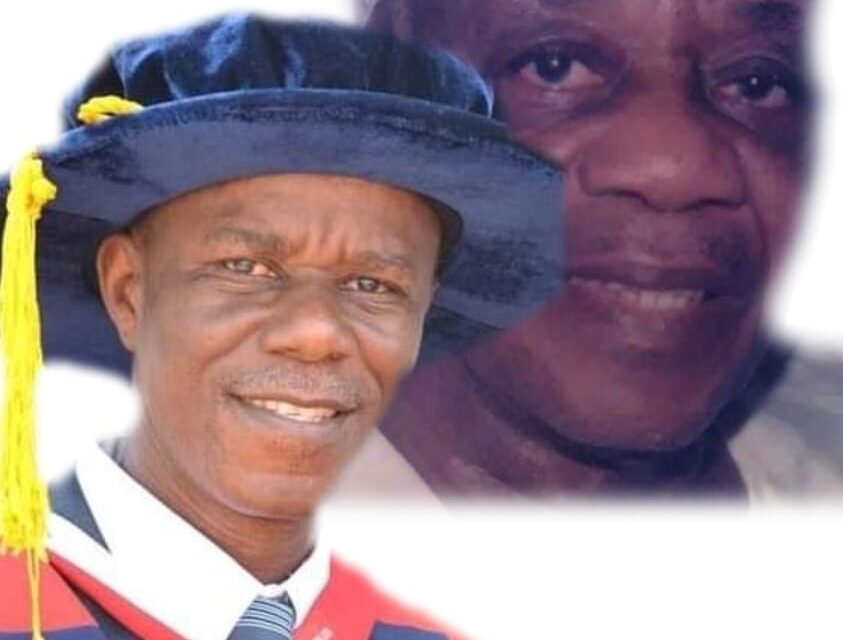


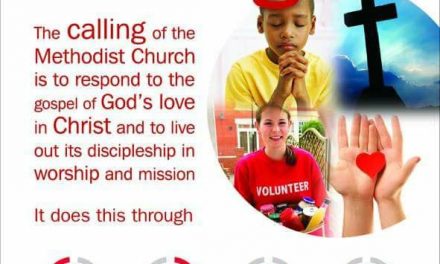

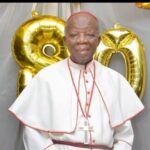

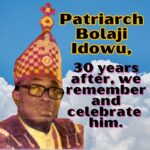
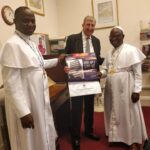
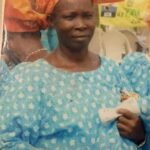
Recent Comments